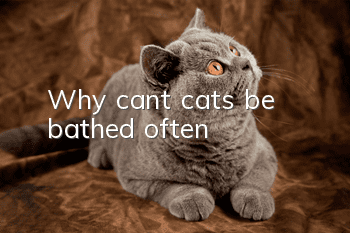How to Screen for Smart Chinchilla Cats

Chinchilla cats have always been given the title of smart, well-behaved, and active. Naturally, they are also loved by the majority of pet lovers. Since you like to raise them, you should have a deeper understanding of them, especially when selecting them. You should pay attention to the selection of breeds. It is best to choose chinchilla cats with good quality. Below, the editor will share with you the basis for selecting chinchilla cats.
1. Morphological characteristics
The ideal chinchilla cat should give people a feeling of thick bones, good balance, and a sweet expression; the body should show a soft, round curve. The head as a whole looks big and round, with a pair of big, round eyes that are widely spaced apart.
Chinchilla has shorter limbs and is slightly smaller than the Persian cat but appears more agile. Chinchilla cats are covered with thick and shiny hair. In countries such as Europe and the United States, single-color chinchilla cats are more common. After years of artificial breeding, many colors have been derived.
The long and thick coat softens the curves of the entire body and highlights the "round" characteristics.
Any of the following are disqualifying:
Coccyx deformity; incorrect number of toes; any apparent spinal deformity; skull deformity that results in a distorted face or head; strabismus.
2. Color Discrimination
Silver Platinum Gila: The undercoat is pure white. The hair tips on the back, abdomen, head, tail and other parts of the body are black. The overall appearance is silvery white. Darker extremities are permitted. The chin, earrings, chest and belly are pure white. There is dark pigment in the eyes, lips, and nose, as if lines were drawn on the above areas. Nose: rose color. Feet soles: black. Eye color: green or blue-green.
Shaded Chinchilla: The undercoat is pure white. The hair tips on the back, abdomen, head, tail and other parts of the body are black. The overall appearance is silver gray. Darker extremities are permitted. The overall feeling is darker than Silver Platinum Gila. The chin, earrings, chest and belly are pure white. There is dark pigment in the eyes, lips, and nose, as if lines were drawn on the above areas. Nose: rose color. Feet soles: black. Eye color: green or blue-green.
Golden Chinchilla: The bottom hair is milky yellow. The hair tips on the back, abdomen, head, tail and other parts of the body are black. The overall appearance is golden yellow. Darker extremities are permitted. The chin, earrings, chest and abdomen are creamy yellow. There is dark pigment in the eyes, lips, and nose, as if lines were drawn on the above areas. Nose: Deep rose red. Feet soles: black. Eye color: green or blue-green.
Shadow Gold Chinchilla: The underlying hair is creamy yellow. The hair tips on the back, abdomen, head, tail and other parts of the body are black. The overall appearance feels darker than gold chinchilla. Darker extremities are permitted. The chin, earrings, chest and abdomen are creamy yellow. EyeThere is dark pigment on the lips, lips, and nose, just like drawing lines on the above parts. Nose: Deep rose red. Feet soles: black. Eye color: green or blue-green.
3. Living habits
The young Jinjila is innocent and naughty. She needs time to exercise and have fun. When she is tired, she will find her owner to be affectionate and playful. After adulthood, the amount of activity gradually decreases, and the time for sleeping and eating is relatively fixed.
Chinchillas with full hair need to be combed and cared for regularly by their owners every day. Spending 5 minutes on grooming your hair every day will also greatly reduce the frequency of hair loss. As one of the long-haired cats, they often need to eat hair removal cream or cat grass and other foods to help their intestines and stomach eliminate hair balls.
Jinjila loves to be clean, recognizes her master, and recognizes her own name. Dry and bright place. The eating habits are mostly small meals and frequent meals. Pay special attention to the lack of salt in food.
Protein should be balanced and reasonable. Generally, the protein content of dry food should be controlled at around 34%.
As a rare purebred cat, the ability to climb and jump is relatively strong.
But it still maintains the unique curiosity of cats and is particularly sensitive to objects such as cat teasing sticks and small flying insects.
Jinjila, who has been used to taking baths since childhood, is very able to tolerate the noise of showers, bathtubs and even hair dryers. In order to ensure the health of your skin, you should bathe once every 10 days.
- How to stop a cat from digging through the trash can?
- Be wary of upper respiratory tract infections in cats, early prevention is key!
- Why doesn't your cat bury his poop? Reasons and methods for cats not burying poop
- 3 steps to teach you how to solve the problem of cat biting!
- How long does it take for the kitten to open its eyes and walk?
- What are the shapes of cat paw pads?
- What medicine to use for cat keratitis
- Why does a cat have bloated belly?
- What are cats’ favorite and least hated colors?
- What age is the best age to neuter a Somali cat?



